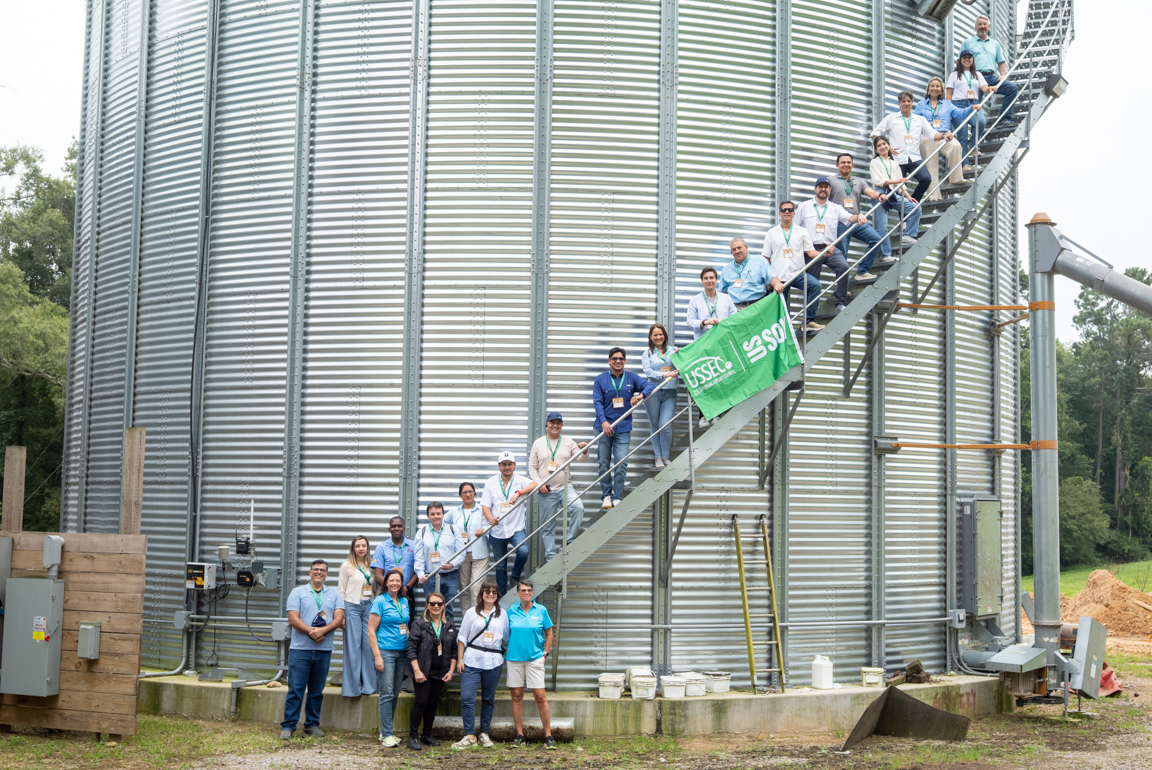New Software Showcases Benefits of U.S. Soybean Meal

U.S. soy is stepping up its game with the U.S. Soy Nutrient Bundle Advantage Value Calculator, a recently developed software program that assesses the entire economic impact of using U.S. soybeans in livestock feed.
“This platform was built in order to compare multiple formulations simultaneously and provide multiple solutions side by side,” said Maria Mayorga, U.S. Soybean Export Council regional poultry technical expert. “The value calculator is much quicker than doing it in any other formulation software.”
Historically, U.S. soy has been challenged on crude protein level compared to soybeans from other origins. But U.S. soy offers other essential components, such as amino acids and energy value. Average U.S. soybean seed composition is 34% protein, which includes essential and non-essential amino acids, 21% insoluble carbohydrates, 19% oil, 9% soluble carbohydrates, 4% ash (minerals) and 13% moisture.
“The value calculator is part of USSEC’s effort to differentiate U.S. soy in the market and create a preference for U.S. soy based on its amino acid profile and metabolizable energy content,” said Mayorga. “Using the platform, we can show the superior nutritional value of U.S. soy. We can also demonstrate through comparisons of different feed formulations, both species and development phase-specific, why U.S. soy is more valuable to the end users compared with soy and soybean meal from other origins.”
Scientific, peer-reviewed and published data demonstrates U.S. soy protein has as high or higher levels of essential amino acids and energy compared to soybeans from other origins. Although the animal production industry globally acknowledges this nutritional data, buying decisions require more information. Now this value calculator provides the industry with the economic data that verifies the nutritional value of U.S. soy.
“This software is a powerful tool to help our customers make decisions driven by the nutrient value of U.S. soy rather than merely its crude protein content and/or price,” said Mayorga. “The program can show them — in real time based on the local market preferences — the economic advantages of incorporating U.S. soy into compound feed.”
Mayorga points out the benefit to U.S soybean farmers when buyers understand the entire economic and nutritional benefits: “The information can boost U.S. soy sales globally and increase U.S. soybean farmer profits.”
Working with USSEC, the checkoff conducted meetings with soybean meal sales desks of the National Oilseed Processors Association and demonstrated the software to gauge if it could position U.S. soy protein as a more economic source than other origins.

“The men and women entrusted with U.S. soybean farmers’ hard-earned checkoff dollars made some critically important strategic decisions,” said David Iverson, checkoff farmer-leader and Meal Target Area coordinator. “Farmer dollars begin stretching and working harder for them — something we can all agree is desperately needed right now.”
Five of the seven National Oilseed Processors Association member soybean meal sales desks presented with this software indicated they were very interested in further collaboration with USB and USSEC to use this tool to facilitate exports of U.S. soy. The other two sales desks were interested in being kept up to date on the developments of this marketing tool.
“Many of us could use a pick-me-up after a difficult crop season. I find real inspiration in what we have accomplished in recent meal programs. It truly shows our commitment to the greater good,” said Iverson. “I hope through critical evaluation of our previous efforts, we can ensure the success of programs in 2020 and beyond.”
Mayorga sees opportunity as well.
“U.S. soy has a bright future ahead,” Mayorga said. “This platform will help customers make purchasing decisions based on U.S. soy’s superior nutritional value rather than its price alone.”



